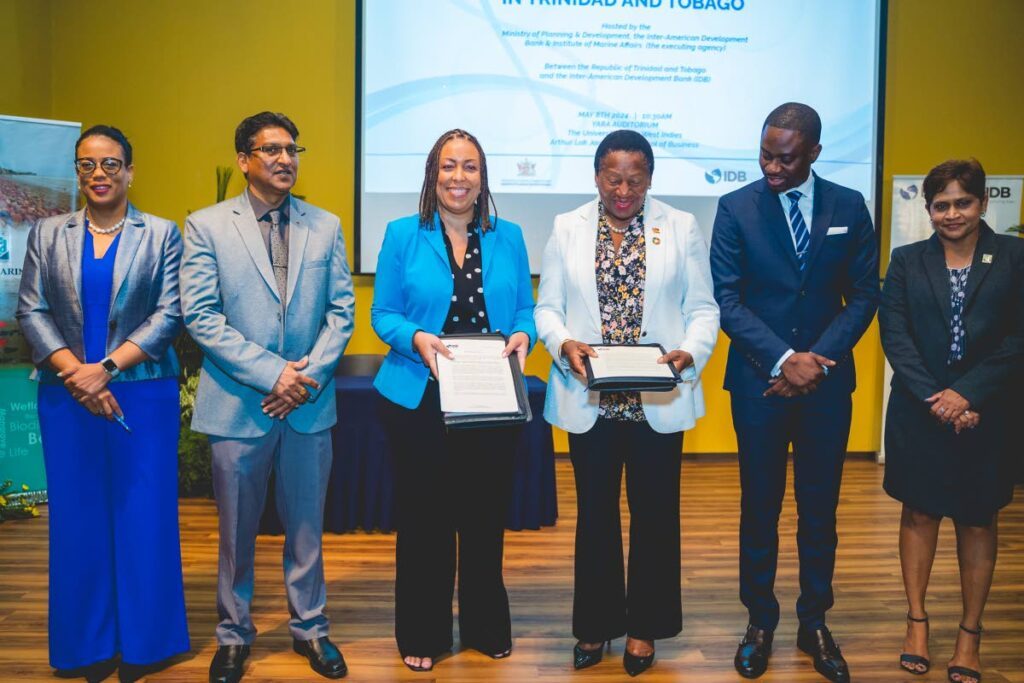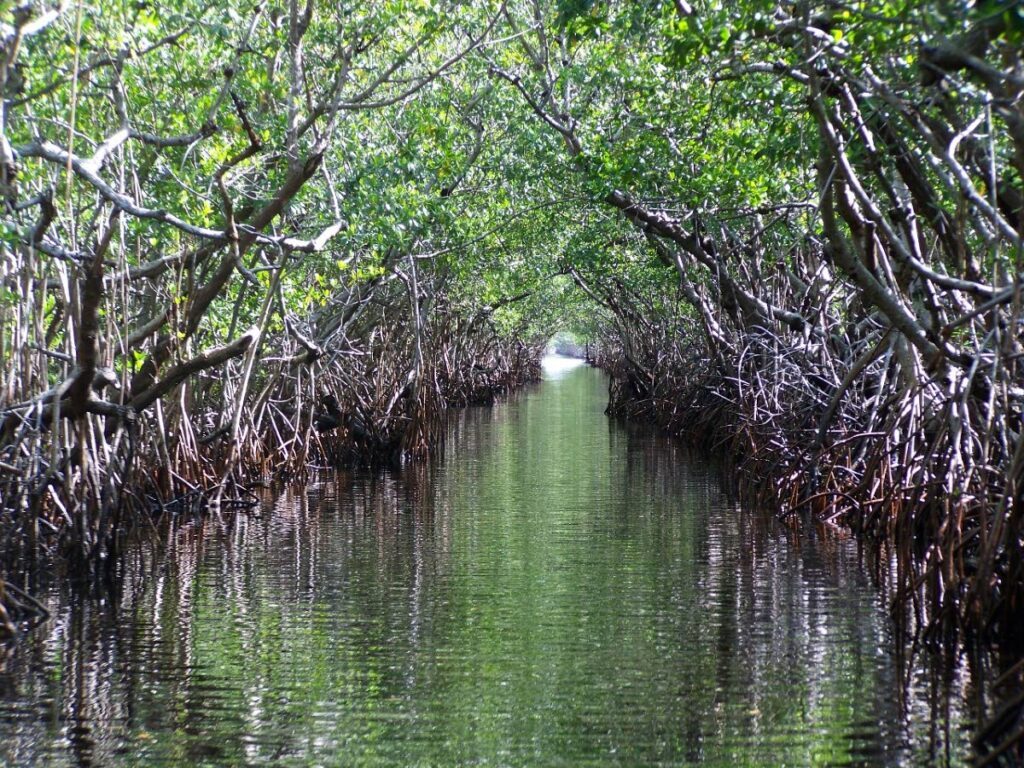IDB gives grant for mangrove conservation

Dr Rahanna Juman
The Institute of Marine Affairs (IMA) has collaborated with the Inter-American Development Bank to pilot a blue carbon credit system in Trinidad and Tobago.
The ceremonial signing of the technical co-operation for a US$550,000 grant took place on May 8 at the Yara Auditorium of the Arthur Lok Jack Global School of Business, Mt Hope.
This project aims to design a high-quality blue carbon credit scheme to improve the digital mapping, monitoring, reporting, and verification of ecosystem services, promote management and ownership of natural capital and create a practical opportunity for livelihood enhancements and revenue generation.
Marine ecosystems, particularly tidal marshes, seagrass beds, and mangrove forests absorb (sequester) and store carbon within biomass and soils. Commonly referred to as “blue carbon” ecosystems because of their relevance to the global carbon cycle, these marine ecosystems provide climate mitigation benefits and a range of other ecosystem services that support coastal livelihoods and adaptation to climate change.
Carbon sequestration in mangroves is disproportionally higher than its spatial extent compared to other ecosystems. Mangrove forests are amongst the most carbon-rich ecosystems in the tropics and are one of the most efficient long-term natural carbon stores. Because of their high sequestration rates, mangroves can significantly affect the global carbon flux.
On average, mangroves have a mean whole-ecosystem carbon stock around 2.5-5 times higher than the mean ecosystem carbon stock found in temperate, boreal, and upland tropical forests (Alongi, 2012). Initial estimates of carbon stored in the mangrove forests in TT are at 1,118,630.99 tonnes. Comparing mangrove forest carbon to terrestrial forest carbon revealed that mangrove forests store 61 per cent more carbon per hectare than terrestrial forests in Tobago. At the same time, for Trinidad, the value was 44 per cent (Juman et al, 2021).

Despite their critical role, there is an increasing loss of mangrove forest systems because of unplanned or ill-advised development or initiatives with short-term gains. These include but are not limited to pollution, coastal development, extractive activities, unsustainable aquaculture, agricultural practices and intense weather events such as storms.
Globally, there has been a decline of 1.04 million hectares between 1990 and 2020 (FAO). Nationally, in Trinidad, mangrove extents declined from 7,345.54 hectares in 2007 to 6,941.68 hectares in 2020.
Mangrove losses directly affect not only sequestration rates and storage abilities but, when degraded, can also contribute to carbon emissions as their stocks are released. Deforestation, forest degradation and land-use change account for the second largest anthropogenic source of carbon emissions, at approximately eight-20 per cent, and mangrove loss is an important contributor to these emissions as mangroves are such carbon-rich ecosystems.
Mangrove conservation has been promoted with increased vigour in global climate negotiations due to its potential to mitigate greenhouse gas emissions. Given the significant storage potential of blue carbon, the blue carbon credit market, as a subset of the carbon credit market, is experiencing growing momentum.
The carbon credit markets have been identified as a key mechanism to create an economic incentive for reducing greenhouse gas emissions cost-effectively, and they are supported by Article 6 of the Paris Agreement.
There is recognition that these carbon markets can bridge the shortfall for countries in financing climate action goals listed in their National Determined Contributions (NDC). TT’s NDC (2018) includes provisions to pursue the development of a feasible carbon trading scheme aimed at reducing emissions in the industrial sector. In fact, 83 per cent of NDCs intend to use these carbon finance mechanisms to reduce greenhouse gas emissions (GHG).
Internationally, the carbon market has challenges, such as double counting greenhouse gas (GHG) emission reductions and greenwashing. As a subset of the carbon market, the blue carbon market faces similar challenges. With growing corporate demand, there is a need to verify these credits and ensure they are of high quality, which places significant emphasis on the livelihoods supported by these ecosystems. Coupled with the need for high-quality credits, there is a need for a robust measurement, reporting and verification (MRV) system to ensure environmental integrity under these market mechanisms.

This project aims to simulate a high-quality blue carbon credit scheme for TT which will include participation by public sector entities, communities, NGOs, CBOs and both local and international private-sector buyers and investors as key actors in the blue carbon market ecosystem.
It will develop a digital monitoring, reporting and verification system and register for the carbon credits generated from rehabilitation projects, and facilitate knowledge sharing events in both Trinidad and Tobago on participation and best practices for participating in a high-quality blue carbon credit market
IMA ongoing research on assessing carbon capture and storage in mangrove and seagrass biomass and soils that can be offset against carbon dioxide emissions from industry can create an opportunity to explore developing and applying a high-quality blue carbon credits program. The development of a scheme will support TT in meeting its NDC targets, developing its blue economy, and conserving its blue carbon ecosystems.

Comments
"IDB gives grant for mangrove conservation"